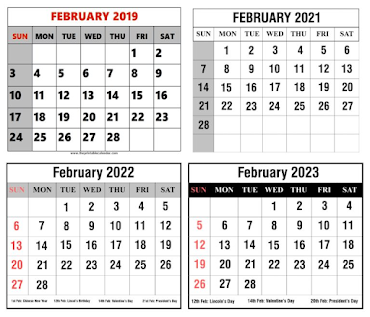In our modern calendar system, the month of February stands out with its unique duration of 28 days. Have you ever wondered why this is the case? In this blog post, we'll delve into the historical and astronomical factors that shape the length of February and shed light on its intriguing origins.
Historical Background
Centuries ago, the Roman calendar formed the basis of timekeeping. It was a lunar calendar, relying on the cycles of the moon. However, this calendar had certain limitations. It didn't align perfectly with the solar year, leading to seasonal discrepancies and confusion.
To address the shortcomings of the Roman calendar, Julius Caesar introduced the Julian calendar in 45 BCE. This calendar brought significant changes and reforms to the timekeeping system. It shifted from a lunar-based calendar to a solar-based calendar.
Under the Julian calendar, February experienced modifications that ultimately resulted in its 28-day duration. The original Roman calendar had ten months, with February being the last month of the year. However, Julius Caesar's calendar reform added two new months, January and February, to the beginning of the year. With these changes, February became the second month of the year, and its length was adjusted to fit within the 365-day calendar.
Why February Has 28 Days
- Earth's Orbit and its Relation to the Calendar: Understanding the Earth's orbit is crucial to comprehending the length of months. The time it takes for the Earth to complete one orbit around the sun, known as a tropical year, is approximately 365.24 days. This fraction of a day poses a challenge for maintaining a consistent calendar system.
- Introduction of the Leap Year Concept: To account for the fractional difference between the solar year and the calendar year, the concept of leap years was introduced. A leap year occurs every four years and adds an extra day, February 29th, to the calendar. This adjustment helps to keep the calendar aligned with the Earth's orbit.
- The Role of Leap Years in Maintaining Calendar Alignment: Leap years are essential for synchronizing our calendar with the Earth's orbit. By adding an extra day every four years, we compensate for the additional fractional day in the tropical year. However, leap years do not occur every four years exactly. There are exceptions to this rule, making the calculation of leap years more intricate.
- Influence of Roman God Mars on the Month of March: Roman mythology and gods played a significant role in shaping the calendar. The month of March was named after the Roman god Mars, who was associated with war and agriculture. To honor Mars, the month following March, which we now know as April, was originally dedicated to the goddess Aphrodite. This shift in the calendar affected the duration of February.
- Origins of February and its Connection to Purification Rituals: February derives its name from the Latin word "februum," meaning purification. In ancient Rome, February was a month of purification rituals, including the famous festival of Lupercalia. These rituals and traditions influenced the duration of the month.
- Adoption of the Gregorian Calendar and its Effect on February's Length: In 1582, Pope Gregory XIII introduced the Gregorian calendar, further refining the calendar system. One of the changes brought by the Gregorian calendar was the adjustment of the leap year rule. While most leap years still occur every four years, those divisible by 100 are not leap years, unless they are also divisible by 400. This adjustment reduced the number of leap years slightly, ensuring a more accurate alignment with the Earth's orbit.
Other Calendar Systems
While the Gregorian calendar is widely used today, there are other calendar systems with their unique approaches to month lengths. For example, the Chinese calendar follows a lunar-based system, and its months vary in duration. The Islamic calendar, based on the lunar cycle, also has months of varying lengths. By comparing these calendars, we can gain a broader understanding of how different cultures and civilizations approached timekeeping.
The lunar calendar, based on the cycles of the moon, poses interesting considerations when it comes to determining the length of months. Lunar months are approximately 29.5 days long, resulting in alternations between 29-day and 30-day months. This approach allows the lunar calendar to stay in sync with the moon's phases but creates a disparity when compared to the solar year.
👉 Read more posts with the same topic
The 28-day duration of February is the result of a fascinating interplay between historical, astronomical, cultural, and religious factors. From the adjustments made by Julius Caesar to the introduction of leap years and the adoption of the Gregorian calendar, multiple elements have shaped the way we perceive and measure time. Understanding the reasons behind February's 28 days offers a glimpse into the complexities of calendar systems and the efforts made to align them with astronomical phenomena. It reminds us of the remarkable human endeavor to create a timekeeping system that reflects both the natural world and our cultural traditions.








0 Comments